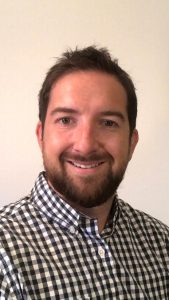Course Outline: PPL1O
The following document is the course outline for the PPL1O course offered by Christian Virtual School. It contains the course description, unit outline, teaching & learning strategies, and the curriculum expectations addressed. This outline can also be viewed as a PDF using the download link provided.
Healthy Active Living Education, Grade 9, Open
Course Code: PPL1O
Grade: 9
Course Type: Open
Credit Value: 1.0
Prerequisite(s): None
Curriculum Document: Health and Physical Education, Revised (2015)
Developed By: Elyse Gosselin
Department: Health and Physical Education
Development Date: September 2020
Most Recent Revision Date: September 2022
Teacher(s):
Course Description:
This course equips students with the knowledge and skills they need to make healthy choices now and lead healthy, active lives in the future. Through participation in a wide range of physical activities, students develop knowledge and skills related to movement competence and personal fitness that provide a foundation for active living. Students also acquire an understanding of the factors and skills that contribute to healthy development and learn how their own well-being is affected by, and affects, the world around them. Students build their sense of self, learn to interact positively with others, and develop their ability to think critically and creatively.
| Overall Curriculum Expectations |
|---|
Active Living
|
Movement Competence: Skills, Concepts, and Strategies
|
Healthy Living
|
Living Skills
|
Resources Required:
This course is entirely online and does not require nor rely on any textbook. The materials required for the course are:
- A calculator (online or hand-held)
- Access to video recording tool (webcam, cellphone, etc.)
- Recommended: athletic shoes
- Recommended: various balls or equivalent to be used in sports and games
The student will also be required to do the following:
- Plan, create, and execute a healthy eating and fitness plan to last a minimum duration of four weeks. The student can execute both the healthy eating and fitness plan concurrently. Students should be advised that they require a minimum of four weeks to complete the course.
Teaching and Learning Strategies:
- Differentiated Learning and Assessment: This course allows students the flexibility to not only work through the course in the order they are most comfortable with, but also lets them select options for assessments that best fit their respective skill sets and comfort levels. The goal is to allow the student to demonstrate their understanding and ability through a variety of assessment opportunities.
- Technology and Media Strategies: Activity-specific skills and strategies are supported by video instruction. This allows students to see the movements prior to participation.
- Thinking Skills Strategies: Through the use of case studies and self-reflection, students will learn to think creatively and critically about issues involving healthy and active living.
Assessment and Evaluation Strategies of Student Performance:
Every student attending Christian Virtual School is unique. We believe each student must have the opportunities to achieve success according to their own interests, abilities, and goals. Like the Ministry of Education, we have defined high expectations and standards for graduation, while introducing a range of options that allow students to learn in ways that suit them best and enable them to earn their diplomas. Christian Virtual School’s Assessment, Evaluation, and Reporting Policy is based on seven fundamental principles, as outlined in the Growing Success: Assessment, Evaluation, and Reporting in Ontario Schools document.
When these seven principles are fully understood and observed by all teachers, they guide the collection of meaningful information that helps inform instructional decisions, promote student engagement, and improve student learning. At Christian Virtual School, teachers use practices and procedures that:
- are fair, transparent, and equitable for all students;
- support all students, including those with special education needs, those who are learning English, and those who are First Nation, Métis, or Inuit;
- are carefully planned to relate to the curriculum expectations and learning goals and, as much as possible, to the interests, learning styles and preferences, needs, and experiences of all students;
- are communicated clearly to students and parents or guardians at the beginning of the school year or course and at other appropriate points throughout the school year or course;
- are ongoing, varied in nature, and administered over a period of time to provide multiple opportunities for students to demonstrate the full range of their learning;
- provide ongoing descriptive feedback that is clear, specific, meaningful, and timely to support improved learning and achievement; and
- develop students’ self-assessment skills to enable them to access their own learning, set specific goals, and plan next steps for their learning.
For more information on our assessment and evaluation strategies, refer to Section 6, Student Achievement, in the Course Calendar.
Program Planning Considerations:

